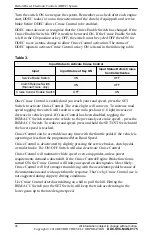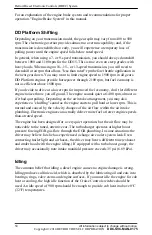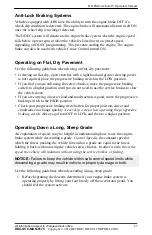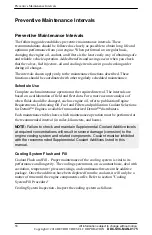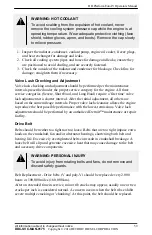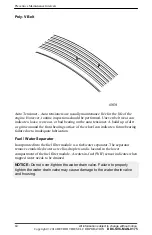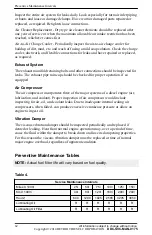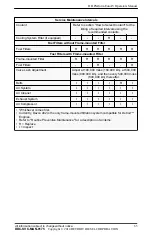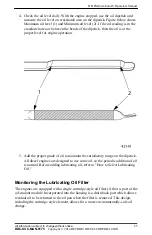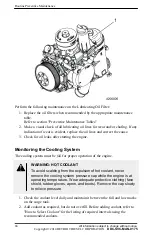
Engine Brake System
The engine is equipped with an engine brake. Before operating the vehicle, you
must familiarize yourself with the engine brake system to obtain optimum benefit
from it. Engine brake control systems may vary slightly, depending on the engine
brake configuration and cab design. However, basic operator controls are similar
for all models.
Driver Control Switches
Vehicles with manual transmissions allow the driver to turn the engine brake on
and off and select a Low, Medium, or High level of braking.
• The "Low" setting on this switch activates braking on two cylinders, yielding
about one-third engine braking horsepower.
• The "Medium" setting on this switch activates four cylinders, supplying about
two-thirds engine braking horsepower.
• The "High" setting on this switch activates all six cylinders, providing full
engine brake horsepower.
NOTE:
There is very little difference in the exhaust sound when the engine
brakes are activated in either the medium or high position.
Clutch Pedal and Throttle Position Controls
Engine brakes have two additional controls, one activated by the position of the
clutch pedal and the other activated by the position of the throttle. These controls
permit fully automatic operation of the engine braking system.
Engine Brake Activation Conditions
The engine braking system only permits fully automatic operation when the
following conditions are met:
• Engine Brake switch is on.
• An Engine Brake level (Low/Med/High) is selected.
• Vehicle meets the programmed minimum speed.
• The Clutch Pedal is out.
• The Accelerator Pedal is at zero percent activation.
DD Platform EuroIV Operators Manual
All information subject to change without notice.
51
DDC-SVC-MAN-0175
Copyright © 2014 DETROIT DIESEL CORPORATION












